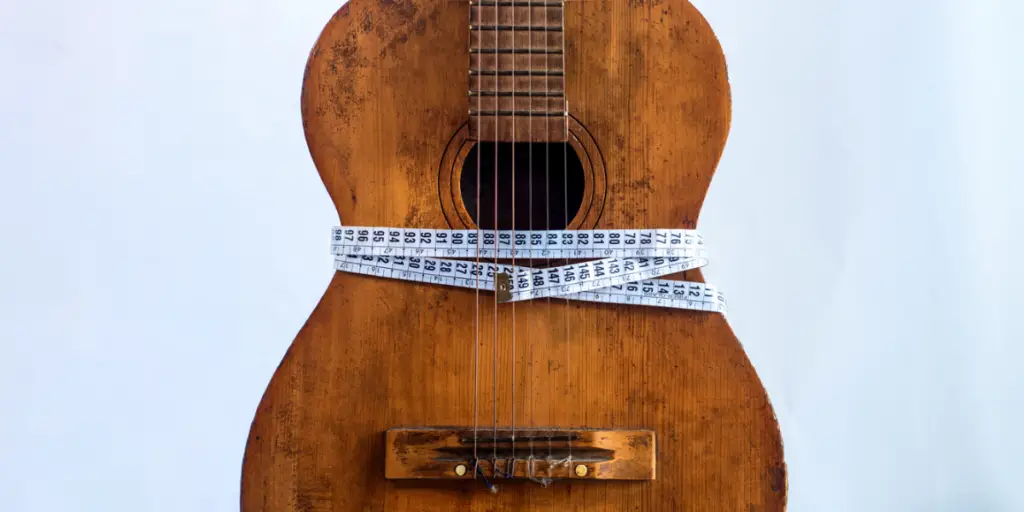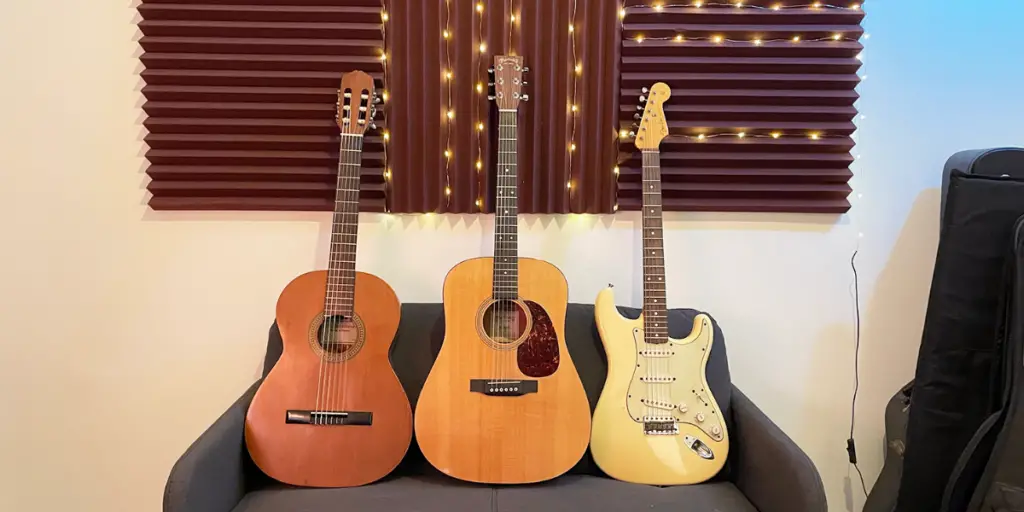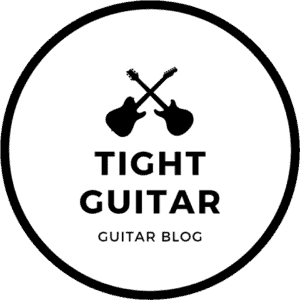
Playing the guitar is a wonderful and fulfilling experience, but it can be difficult to enjoy when you are struggling with a guitar that is too big for you. Choosing the right guitar size is crucial for comfort, technique, and overall musical enjoyment. If you’re not sure if your guitar is too big, this article will help you determine if it’s time to find a better fit.
As a general rule, the best way to determine if a guitar is too big for an individual is by examining the angle of their right arm while holding the guitar. If the right arm is angled higher than 90 degrees in relation to the torso, it is likely that the guitar is too large for comfortable playing.
Keep reading to learn more about other factors to consider when choosing a guitar that fits your needs, including matching guitar size to age for children vs. adults and understanding the different sizes of acoustic and electric guitars.
Factors to Consider When Determining Guitar Size

When selecting the appropriate guitar size, there are multiple factors to take into account, including age, height, body size, as well as artistic considerations such as your desired guitar tone and the type of music you play.
Age & Height
Age and height play a key role, as smaller guitars may be necessary for children, some women, and other shorter individuals. To help, here’s a helpful table that matches the age with recommended guitar size:
| Age | Recommended Guitar |
| ~3 | Ukulele |
| ~5 | Guitalele |
| ~8 | ½ size |
| ~10 | ¾ size |
| 12+ | Full size |
Guitar Body Size
If your right arm feels awkward while playing or the body of the guitar seems too big, it may be wise to consider switching to a different guitar model rather than a smaller-sized instrument like a 3/4 or 1/2 size.
On the other hand, if you have difficulty playing in the lower neck region and find your left-hand overstretching, you might consider switching to a shorter-scale guitar or even a smaller-sized guitar.
Guitar Neck Length
The playing experience on a guitar can be greatly impacted by the neck length, nut width, and thickness of each specific model. The typical scale lengths range from 25.4, and 25.5 inches to 24.75 inches. Additionally, there are several neck shapes available, with the most common being the C, D, and U shapes. The less common V-neck shape offers a unique playing experience for the musician.
Author’s note: In my opinion, the D shape neck is the most comfortable, and I would highly recommend it to those just starting out, even though not all of my guitars have this neck shape.
The Player’s Body Size
The player’s body size and arm length also play a role, as larger players may prefer larger guitars while smaller players may find smaller guitars more comfortable.
Dolly Parton, who stands at just 5 feet tall, plays an exceptional game on a 3/4 size acoustic guitar. Although it may not have as much low-end as the Dreadnaught model, it still delivers a great sound.
On the other side, Joni Mitchell who stands at an average height of 5 feet 6 inches, plays a full-scale Dreadnaught acoustic guitar. Despite its size, she makes it work for her by often utilizing a Capo as demonstrated in this incredible performance.
Guitar Tone and Musical Preference
Furthermore, the tone you are looking for and your playing style are significant factors in choosing a guitar. Guitar players may opt for guitars of various sizes and shapes that fit the genre they play. For example, the classic Dreadnought design is ideal for those who desire a full-bodied acoustic guitar tone suitable for strumming and soloing. On the other hand, the Concert acoustic guitar design is commonly used in blues and country music.
Signs that Your Guitar is Too Big
If your guitar is too big, you may experience difficulties reaching the lower frets, discomfort while playing, poor posture and technique, and an inability to play certain chords or notes. These are signs that the guitar is too large and is causing strain in the arms, neck, and shoulders.
Correct sitting
If you experience discomfort while playing the guitar, make sure that your chair is at the right height, with your knees bent at a 90-degree angle. If you still don’t feel comfortable, try using a guitar leg rest on your right leg when playing the Rock/Pop style or switch to the classical style where the guitar rests on your left thigh and place the leg rest under your left leg.
How to Measure the Right Guitar Size
Determining the right guitar size by measuring the player’s body is not the most effective method and can lead to confusion. A better option is to try out various sizes at a guitar store, which allows the player to experience the differences and determine which size feels most comfortable. Seeking advice from a guitar teacher or experienced player can also be beneficial, as they have a deeper understanding of the player’s needs and can provide recommendations for the ideal size.
Size Differences Between Acoustic, Classical, and Electric Guitars

The three main types of guitars are classical, acoustic, and electric. Classical guitars have a sound hole and nylon strings, acoustic guitars have a sound hole and steel strings, and electric guitars have electromagnetic pickups and require an amplifier to produce sound with steel strings.
Here are three types of full-sized guitars, including a Dreadnaught acoustic, a classical guitar, and a Stratocaster electric guitar.
A Clever Way to Reduce the Length of Your Guitar

If you prefer not to switch to a guitar that better fits your requirements, or if you simply can’t, there is a solution. The solution involves using a Capo. Start by placing the Capo on the first fret. Next, tune the guitar to standard tuning (from low to high – EBGDAE).
By doing so, you will have a shortened guitar with more compact lower frets that are easier to play. The only drawback of this trick is that the fretboard’s marking dots will no longer correspond to the same notes as they did before.
Conclusion
In conclusion, choosing the right guitar size is crucial for a comfortable and enjoyable playing experience. Factors such as age, height, body size, playing style, and tone preference should be considered when selecting the appropriate guitar size. If you experience discomfort while playing, poor posture and technique, or difficulty reaching the lower frets, it’s likely that your guitar is too big.
The best way to determine the right guitar size is by trying and comparing various sizes at the guitar store and seeking advice from a guitar teacher or experienced player. The size of the guitar can greatly impact the playing experience, so it’s important to take the time to find the right fit. Whether you are a beginner or an experienced player, finding the right guitar size can greatly impact your playing experience.








